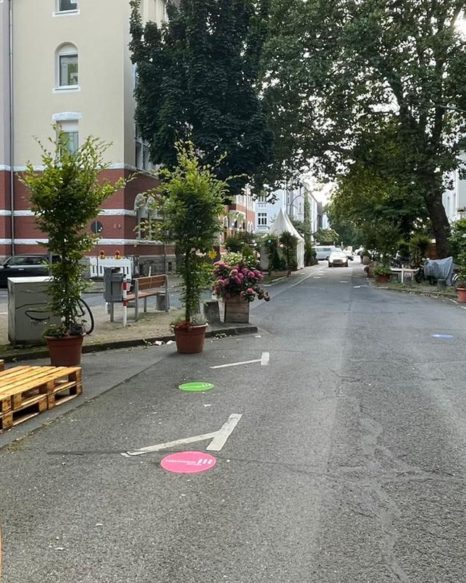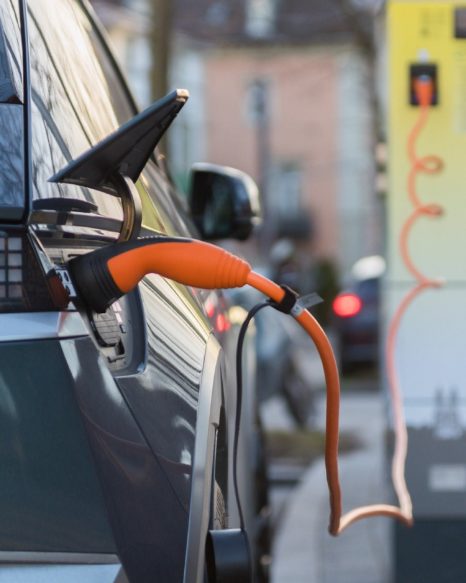
Footnotes
| ↑1 | Improving vehicles does not necessarily lead to fewer traffic fatalities: „Daher ist es (…) nicht zielführend technische Maßnahmen einzusetzen, um das objektive Risiko zu verringern, da diese Reduktion gegebenenfalls durch das eigene Verhalten kompensiert wird.“ ["Therefore, it is (...) not purposeful to use technical measures to reduce objective risk, since this reduction may be compensated by one's own behaviour."] In: Gehlert, Tina; Kröling, Sophie (2018): Verkehrssicherheit. In: Oliver Schwedes (ed.): Verkehrspolitik. Eine interdisziplinäre Einführung. 2nd ed. 2018, Wiesbaden: Springer Fachmedien Wiesbaden, pp. 271-292. |
|---|---|
| ↑2 | Most road users die on rural roads. https://www.destatis.de/DE/Themen/Gesellschaft-Umwelt/Verkehrsunfaelle/_Grafik/_Statisch/verkehrsunfaelle-getoetete-beteiligungsart.png?__blob=poster [11.02.2021] |
| ↑3 | In 1969, eight-year-old Björn Steiger was killed when he was hit by a motorist. It took an hour for an ambulance service to arrive on the scene. He died of shock on the way to hospital. The parents initiated the Björn Steiger Foundation only two months later and since have advocated a comprehensive system of first response. The nationwide emergency numbers 110 and 112, the job description of the paramedic, an emergency doctor available around the clock and other emergency services that are now taken for granted can be traced back to this advocacy. https://www.steiger-stiftung.de/ueber-die-stiftung/historie [11.02.2021] |
| ↑4 | The number of children killed is stagnating. https://www.bast.de/BASt_2017/DE/Presse/Downloads/2020-17-Unfallprognose.pdf?__blob=publicationFile&v=2 [11.02.2021] |
| ↑5 | https://de.statista.com/statistik/daten/studie/1041872/umfrage/getoetete-fahrradfahrer-im-strassenverkehr-in-deutschland/ [11.02.2021] |
| ↑6 | https://gesetze.berlin.de/jportal/?quelle=jlink&query=MobG+BE++10&psml=bsbeprod.psml&max=true [11.02.2021]. |
| ↑7 | In 2019, one car driver and two motorcyclists died on the roads in Helsinki. https://www.tagesspiegel.de/gesellschaft/panorama/berlin-kann-sich-beispiel-an-finnland-nehmen-keine-toten-fussgaenger-und-radfahrer-2019-in-helsinki/25558478.html [11.02.2021] |
| ↑8 | https://www.berlin.de/ba-pankow/politik-und-verwaltung/bezirksverordnetenversammlung/online/vo020.asp?VOLFDNR=5640 [11.02.2021] |
| ↑9 | https://www.umweltbundesamt.de/themen/verkehr-laerm/verkehrsplanung/tempolimit#tempolimit-innerorts [11.02.2021] |
| ↑10 | https://www.spiegel.de/spiegel/print/d-43064362.html [11.02.2021] |
| ↑11 | https://www.tagesspiegel.de/berlin/bezirke/erhoehte-sicherheit-oder-gesetzwidrig-in-berlins-groesstem-bezirk-soll-bald-auf-allen-strassen-tempo-30-gelten/26835948.html [11.02.2021] https://www.umweltbundesamt.de/sites/default/files/medien/2546/publikationen/wirkungen_von_tempo_30_an_hauptstrassen.pdf, P.10-11 [11.02.2021] |
| ↑12 | Reference should also be made here to the debate following the last amendment to the Road Traffic Act. Critics complained that if the critical limit was lowered to 21 km/h above the official speed limit in inner city areas, which would result in sanctions, violations would happen far too often due to the confusing and constantly changing speed limits. The consequence should not be to lower tolerance for speeding, but to find a clear solution so that speeding is more detectable. This would also make it easier to sanction deliberate speeding, since a driver could no longer claim to not have seen a sign. Not to mention the gain in aesthetics and reduction of bureaucracy if a municipality could save itself vast amounts of traffic signs with a uniform 30 km/h regulation. |
| ↑13 | https://www.destatis.de/DE/Themen/Gesellschaft-Umwelt/Verkehrsunfaelle/_Grafik/_Interaktiv/verkehrsunfaelle-fehlverhalten.html [11.02.2021] |
| ↑14, ↑17 | Gehlert, Tina; Kröling, Sophie (2018): Verkehrssicherheit. In: Oliver Schwedes (ed.): Verkehrspolitik. Eine interdisziplinäre Einführung. 2nd ed. 2018, Wiesbaden: Springer Fachmedien Wiesbaden, pp. 271-292. |
| ↑15 | Ibid. |
| ↑16 | Driving at 82 km/h instead of the permitted 30 km/h: https://www.berlin.de/polizei/polizeimeldungen/pressemitteilung.1040823.php [11.02.2021] |
| ↑18 | https://deutsche-verkehrswacht.de/wp-content/uploads/2020/08/2018_DVW_Broschre_Kinder-zu-Fu-im-Straenverkehr.pdf [23.02.2021] |
| ↑19 | Cf. Schwedes, Oliver; Wachholz, Sina; Friel, David (2021): Sicherheit ist Ansichtssache. Subjektives Sicherheitsempfinden: Ein vernachlässigtes Forschungsfeld. Discussion Paper. Ed. by Fachgebiet Integrierte Verkehrsplanung. Technische Universität Berlin. Berlin. Available online at https://www.ivp.tu-berlin.de/fileadmin/fg93/Dokumente/Discussion_Paper/DP17_Schwedes_et_al.pdf [26.01.2021] |













